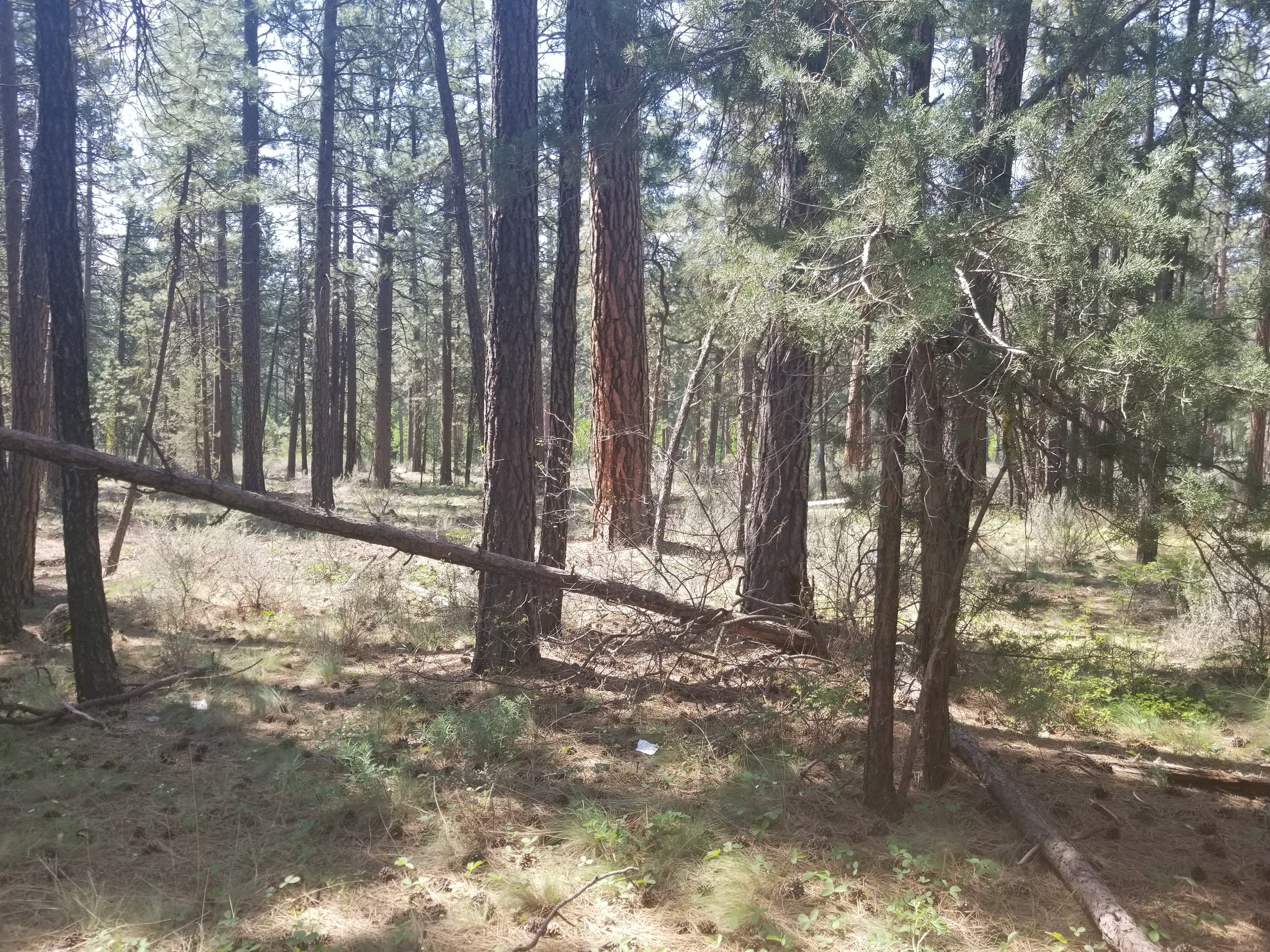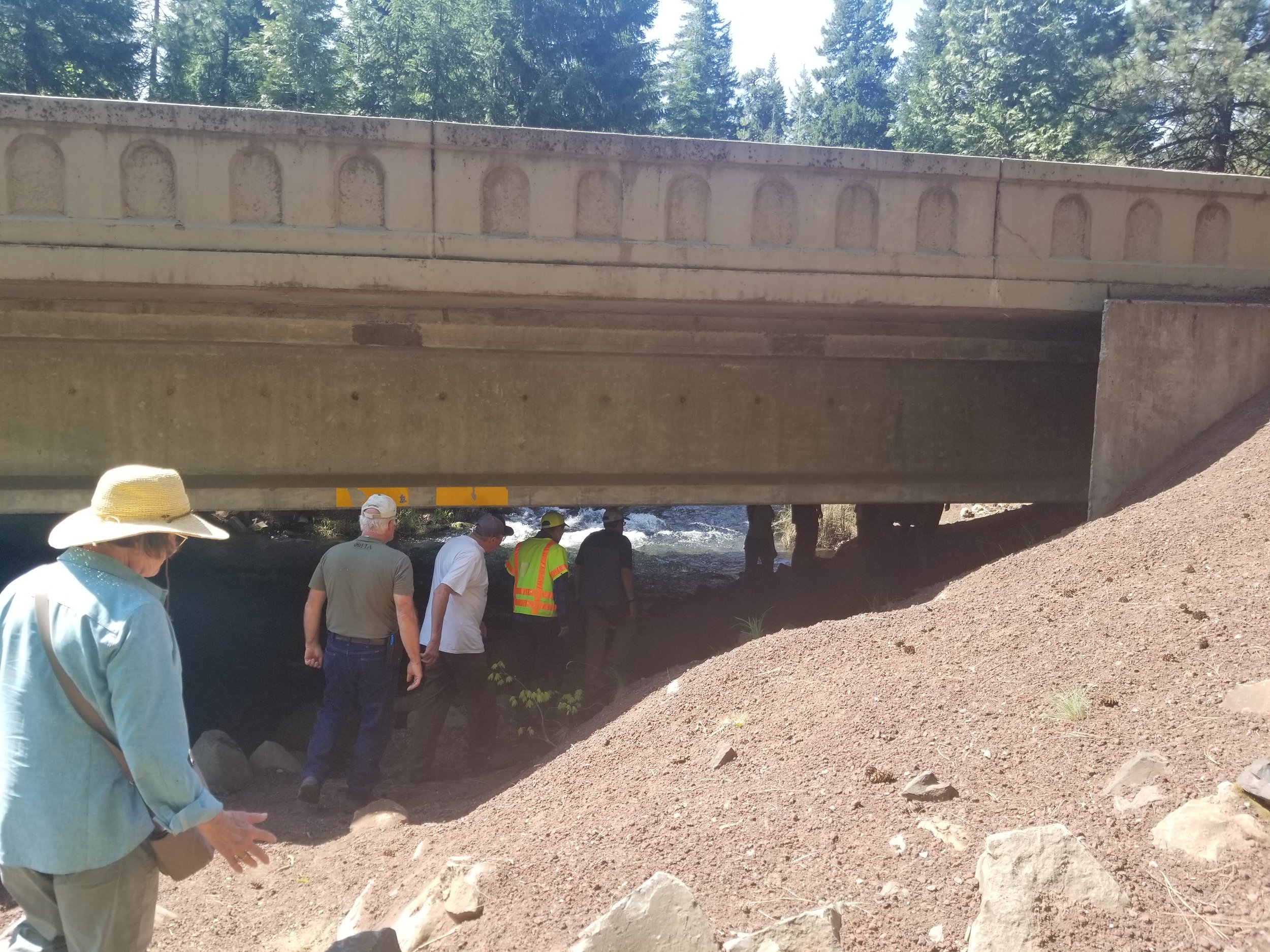The Power of Community – Reconnecting & Restoring Wildlife in Bend
“Before wolves returned to the western side of Oregon, a wolf – OR-7 – dispersed across Oregon and down into California looking for a mate, with no luck for years. Oregon locals tracked his path, rooting for him to find a partner. Finally, when he turned back to Oregon, a female wolf dispersed from her pack in northeast Oregon and crossed to the Cascades. They finally met, and their descendants - pups and grandpups - live on today in the Rogue Pack near Crater Lake.”
Suzanne is a volunteer interpreter at the High Desert Museum and the Oregon Wildlife Foundation, and founder of Protect Animal Migration. She is a local advocate for wildlife, giving fact-based information to her community to promote a tangible goal: protecting animals through wildlife crossings.
Bend is a beautiful and booming town famous for its mountainous terrain along the Deschutes River. Like many rural towns, it’s home to both hunters and hikers, agriculture and tourism, conservationists, and environmentalists.
Other residents are also drawn to Bend for its natural habitat and traversing paths established over generations. Mule deer and elk move in herds from their winter range in the high desert to their summer range in the Cascades. Different mammals live in the area, including antelopes, bears, mountain lions, otters, porcupines, mink, and beavers. As Suzanne detailed, travelers pass through too – wolves like OR-7 move quickly from the Rockies in the east to the Cascades in the west as they search for new territories. As wolves move west across the state, their federal designation shifts from delisted to endangered, helping to rebuild previously persecuted populations in the West. This movement is vital to their species’ survival in Oregon.
If you look at Oregon today, its natural landscape and its infrastructure pose obvious conflicts to wildlife. Road and rail networks slice through key migration corridors for resident elk and deer populations and serve as a barrier to wildlife movement between two major wildways, the Pacific and Western, delineated in broad terms by the Cascade and the Rocky Mountains, respectively. As people continue to move and travel to Bend, the resulting traffic intensifies these barriers, and wildlife habitats get increasingly fragmented.
As elk and deer migrate, they end up in yards and in front of cars, notably between Bend and Suttle Lake, a picturesque recreation spot attractive to residents and travelers alike. Connecting Bend and Suttle Lake is a 35-mile stretch of Highway 20 that bisects these migration routes, creating a wildlife-vehicle collision hotspot.
Oregon drivers face the highest likelihood of colliding with wildlife on the road of all Pacific states. In 2022, there were almost 5,000 reported wildlife-vehicle collisions in the state, with another half or even two thirds going unreported. The cost of reported deer and elk collisions alone is estimated at over $91.7 million.
Due to collisions, fragmentation, and habitat loss, deer populations in Bend decreased by 50% between 2004 and 2021, and continue to decline by 10% per year.
While each individual community appreciates Bend for different reasons, they all have one thing in common: a desire to restore elk and deer populations. Whether to safeguard biodiversity, create sustainable game hunting, increase safety for drivers, or save their own herds, they all benefit from keeping animals off the road.
Short of a full infrastructure reconstruction, wildlife crossings are the answer. They are a tangible, non-partisan, proven solution to protect both drivers and wildlife. A crossing on Highway 97 in Central Oregon has already reduced wildlife-vehicle collisions by more than 90%.
However, getting a wildlife crossing installed is a major undertaking. It typically involves the coordination of public land managers and private landowners, communities, and politicians. It requires millions of dollars and a number of permits. One project could take 10 years to progress from initial research to final construction.
Over the years, Wildlands Network identified the highway between Bend and Suttle Lake as a priority location for the placement wildlife crossings and associated exclusionary fencing. This year, led by Colin Reynolds, Oregon Project Manager at Wildlands Network, we took a big step forward, not by undertaking this project alone, but rather by joining forces with the entire community. We, alongside the Central Oregon Land Watch, Oregon Wildlife Foundation, Oregon Hunters Association, Theodore Roosevelt Conservation Partnership, Oregon Department of Transportation, Oregon Department of Fish and Wildlife, US Forest Service, and community members, came together under the banner of “Bend to Suttle Lake Wildlife Passage Initiative” to pursue wildlife crossings.
Although we are at the beginning stages of this journey, Colin and our Wildlands Network experts whose knowledge spans across science, policy, fundraising, and wildlife crossings are poised to work and offer help on topics ranging from federal grant opportunities to permitting procedures to road ecology studies that explain the optimal wildlife crossing structure types.
“Our goal is to move wildlife crossing projects forward by offering expertise and facilitating conversations between community members, elected leaders, non-profits, agencies, and everyone in between to foster community-centric conservation. We bring everyone to the table.”
While we organize, we know that restoration through the local community is both critical to a project’s success and a sustainable solution. “Legislators want to hear from their constituents,” notes Colin. Local interest spurs political action. As a result, connecting with local leaders like Suzanne is essential for widespread education and buy-in from important legislators and agencies. “I introduce the reasons for habitat connectivity and landscape-level solutions like wildlife crossings so that residents and politicians can understand the reasons why some species have to move across the landscape in order to survive,” Suzanne says.
Through concerted action, our coalition has raised sufficient funding to hire a contractor to study this 35-mile stretch of road to find the best locations to construct wildlife crossings and fencing. We’re working toward construction in 2026. “Things are progressing well and it's great to see everyone, including agency representatives, thinking big - i.e., asking questions like, ‘How many crossings do we need per mile to reconnect this landscape?” Colin says.
This big-picture thinking is exactly what we’re working toward for a reconnected future. We now need not only one or two, but an entire network of crossings across the highway systems in Oregon, in the wider United States, and across North America.
The good news is that this process is replicable and promotes widespread change. Where there are roads or rail, it is likely that there are barriers to wildlife that present safety issues for humans and animals. Our solution of grassroots community organizing towards the goal of reconnecting and restoring North America can be replicated anywhere. While our focus right now is on pursuing projects in the most dangerous locations for humans and wildlife, we encourage everyone to look outside and seek solutions with your neighbors. How are wildlife faring on your roads?






